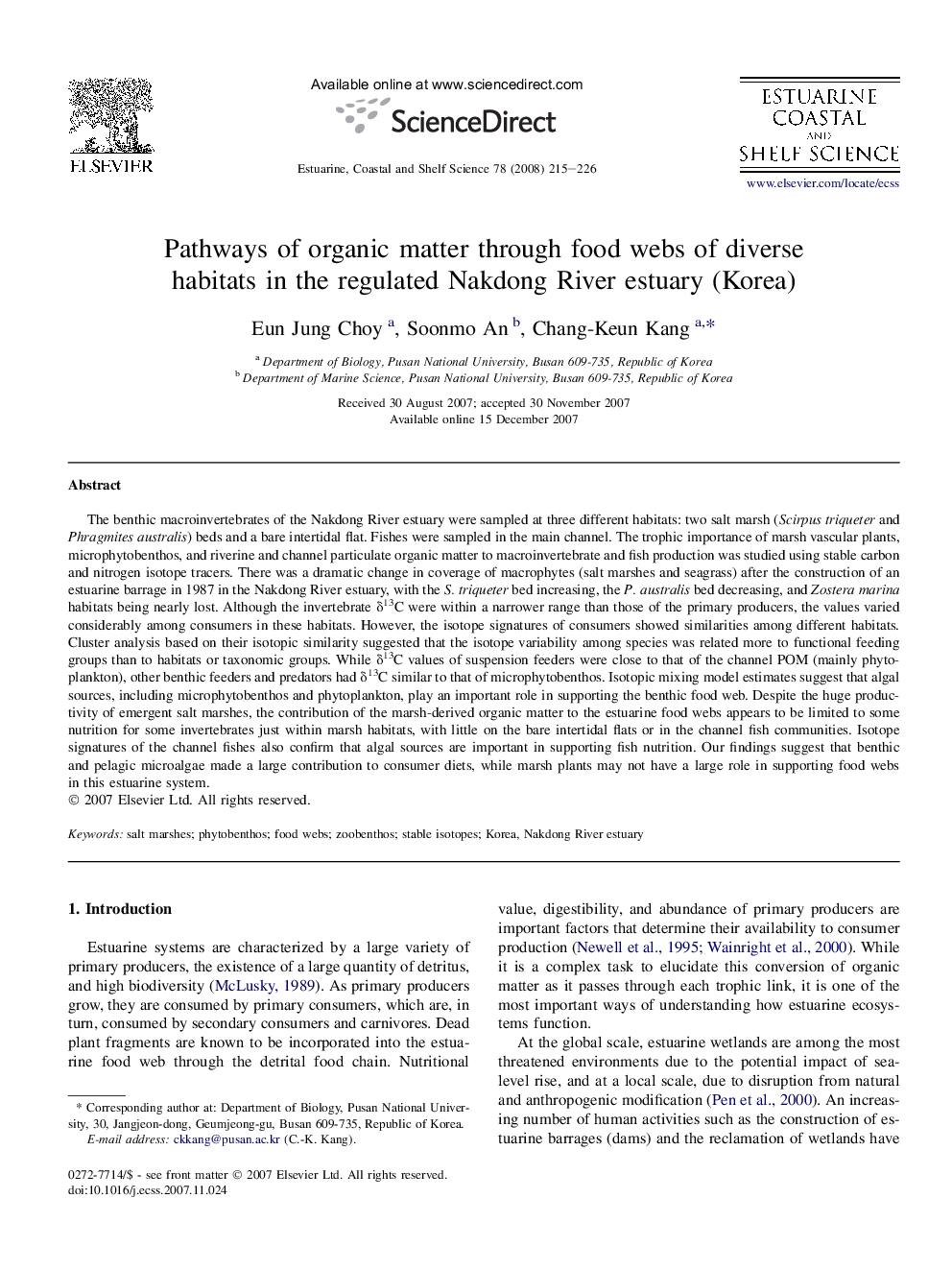| Article ID | Journal | Published Year | Pages | File Type |
|---|---|---|---|---|
| 4541465 | Estuarine, Coastal and Shelf Science | 2008 | 12 Pages |
The benthic macroinvertebrates of the Nakdong River estuary were sampled at three different habitats: two salt marsh (Scirpus triqueter and Phragmites australis) beds and a bare intertidal flat. Fishes were sampled in the main channel. The trophic importance of marsh vascular plants, microphytobenthos, and riverine and channel particulate organic matter to macroinvertebrate and fish production was studied using stable carbon and nitrogen isotope tracers. There was a dramatic change in coverage of macrophytes (salt marshes and seagrass) after the construction of an estuarine barrage in 1987 in the Nakdong River estuary, with the S. triqueter bed increasing, the P. australis bed decreasing, and Zostera marina habitats being nearly lost. Although the invertebrate δ13C were within a narrower range than those of the primary producers, the values varied considerably among consumers in these habitats. However, the isotope signatures of consumers showed similarities among different habitats. Cluster analysis based on their isotopic similarity suggested that the isotope variability among species was related more to functional feeding groups than to habitats or taxonomic groups. While δ13C values of suspension feeders were close to that of the channel POM (mainly phytoplankton), other benthic feeders and predators had δ13C similar to that of microphytobenthos. Isotopic mixing model estimates suggest that algal sources, including microphytobenthos and phytoplankton, play an important role in supporting the benthic food web. Despite the huge productivity of emergent salt marshes, the contribution of the marsh-derived organic matter to the estuarine food webs appears to be limited to some nutrition for some invertebrates just within marsh habitats, with little on the bare intertidal flats or in the channel fish communities. Isotope signatures of the channel fishes also confirm that algal sources are important in supporting fish nutrition. Our findings suggest that benthic and pelagic microalgae made a large contribution to consumer diets, while marsh plants may not have a large role in supporting food webs in this estuarine system.
